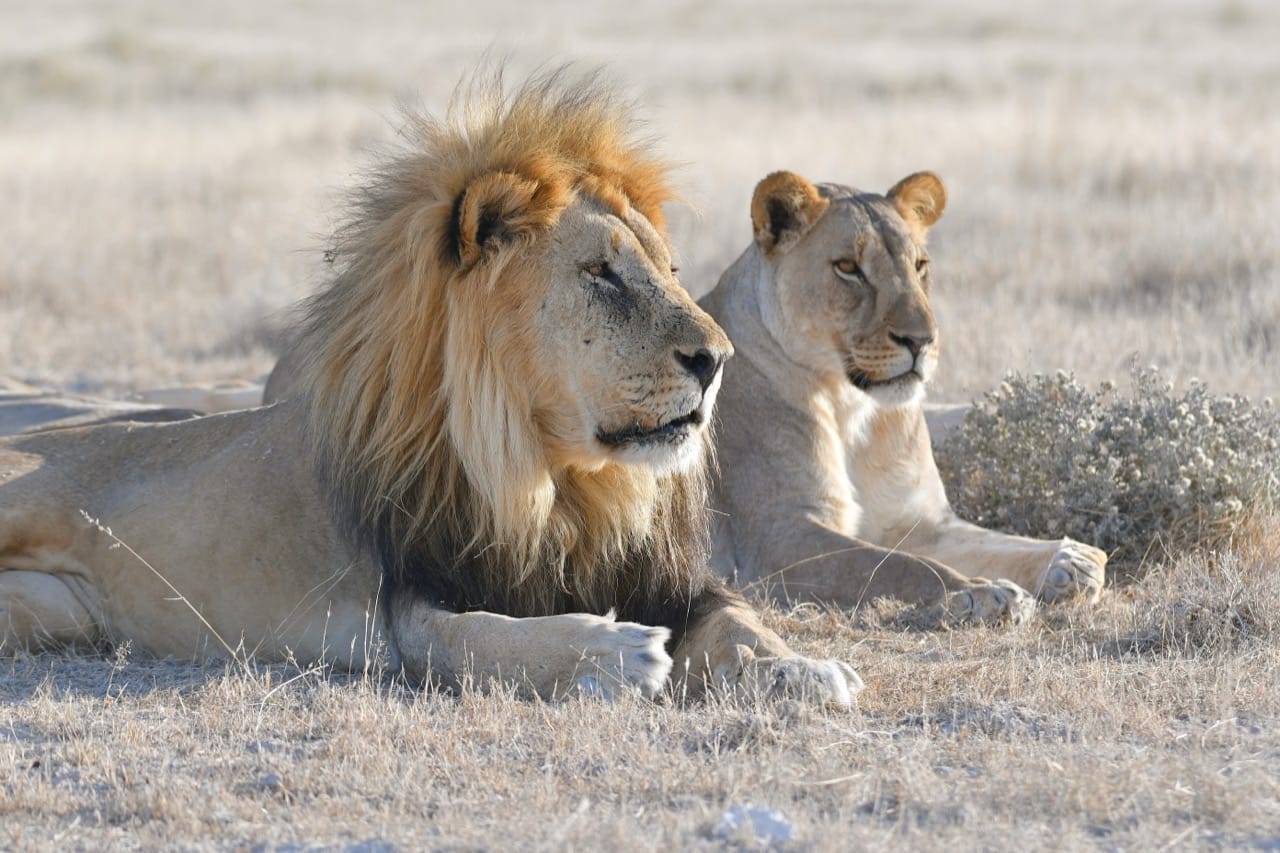Regal and imposing, the African lion (Panthera leo) remains one of the most emblematic symbols of strength and royalty across various cultures worldwide. Their formidable presence and striking golden manes evoke a mix of admiration, fear, and respect. Found predominantly in sub-Saharan Africa, these magnificent creatures have fascinated humans for millennia, featuring prominently in our art, folklore, and literature.
Characteristics / Physical Description
The African lion is a powerful and muscular big cat, second only in size to the tiger among the wild cats. Adult males typically weigh between 150 to 250 kilograms (330 to 550 pounds), while females are slightly smaller, weighing 120 to 182 kilograms (265 to 400 pounds). The most distinctive feature of the male lion is its majestic mane, which varies in color from blonde to black and serves as a signal of the lion’s genetic quality and fitness.
Lions have a robust build with a long body, large head, and short legs. Their coats are a tawny yellow color, which provides excellent camouflage in the African grasslands. Cubs are born with dark spots on their fur, which fade as they mature.
Taxonomy and Classification
Lions are classified under the genus Panthera, family Felidae, which includes other big cats like tigers, leopards, and jaguars. Scientifically named Panthera leo, lions are one of the five big cats in the Panthera genus and have several subspecies, grouped primarily by their geographical range.
Behavior and Social Structure
Unlike other big cats, lions are incredibly social animals, living in groups known as prides. A pride typically consists of related females, their cubs, and a small number of breeding males and can range from as few as three to as many as 20 lions. The females usually stay with their birth pride for life, whereas males must leave once they reach maturity to find a new pride to take over.
Lions are apex predators and play a crucial role in controlling the population of herbivores in their ecosystem. They exhibit cooperative hunting strategies that are primarily led by the lionesses and involve ambushing or encircling prey.
Habitat and Distribution
Historically, lions roamed across Africa, Asia, and Europe, but their numbers have significantly dwindled due to habitat loss and conflicts with humans. Today, they are mostly found in sub-Saharan Africa, with a critically endangered remnant population in northwest India. They inhabit a variety of habitats from grasslands, savannas, and scrublands to forests, preferring areas where they can find sufficient cover for hunting and shade.
Diet and Feeding Habits
Lions are carnivores with a preference for large ungulates such as zebra, wildebeest, and buffaloes. They are capable of taking down large prey due to their size and strength, but they also eat smaller animals when the opportunity arises. The lionesses are generally responsible for hunting, using teamwork to take down prey.
Breeding and Reproduction
Lionesses reach sexual maturity at about four years of age and can breed every two years. Gestation lasts about 110 days, and litters can range from one to six cubs. Cubs are vulnerable and depend entirely on their mothers for the first few months. Mortality rates are high in young lions due to predation, starvation, or abandonment if the pride is taken over by new males.
Relationship with Humans
Humans and lions have a complex relationship that ranges from reverence and symbolic significance to fear and antagonism. Lions are popular zoo animals and are central to wildlife tourism in Africa. However, they are also threats to livestock and human lives, leading to conflicts and killings.
Evolutionary History
Lions share a common ancestor with other big cats, which originated in Asia approximately 11 million years ago. The evolution of lions has been influenced by geographical isolation, environmental change, and dietary resources, leading them to develop into the apex predators we see today.
Use as Research Animals
Lions are important subjects in ecological and behavioral research. Studies focus on their social structure, hunting behaviors, and genetics, providing insights that can help in conservation efforts and in understanding the dynamics of predator-prey relationships in a changing environment.

